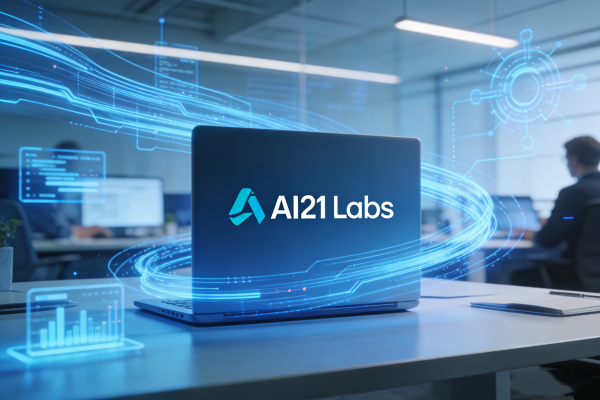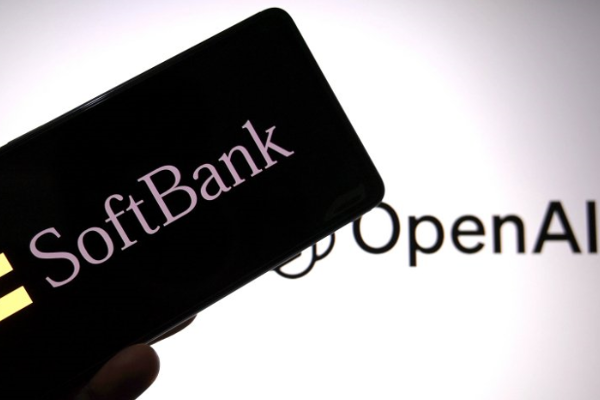New US Stablecoin Policy: Non-Securities
The U.S. SEC's corporate finance department released a new policy on stablecoins.
The SEC created a new term - regulated collateralized stablecoins to describe stablecoins that "maintain a stable value relative to the U.S. dollar, can be converted into U.S. dollars at a 1:1 ratio (i.e., 1 stablecoin for 1 U.S. dollar), are backed by reserve assets, are considered low-risk and highly liquid, and have a U.S. dollar value that reaches or exceeds the redemption value of the circulating stablecoins." That is, 1 stablecoin for 1 U.S. dollar), and are backed by reserve assets that are considered low-risk and highly liquid, and whose U.S. dollar value reaches or exceeds the redemption value of the circulating stablecoins.
The agency said that regulated collateralized stablecoins are not offered or sold as investment contracts and are therefore not within the scope of SEC regulation.
Some believe that the United States' move is to further consolidate its own dominance of the U.S. dollar as a global reserve currency in the "digital economy field." Let the U.S. dollar take the lead in the future digital economy competition.
In addition, the statement does not include algorithmic stablecoins, interest-bearing stablecoins, and stablecoins that track the value of assets other than the U.S. dollar.
The full text of the new rule is as follows:
Statement on Stablecoins
Department of Corporate Finance
April 4, 2025
Introduction
To further clarify the application of federal securities laws to crypto assets, the Department of Corporate Finance is issuing an opinion on certain types of crypto assets commonly referred to as “stablecoins.” Specifically, this statement concerns stablecoins that are designed to maintain a stable value relative to the U.S. dollar (USD), are redeemable for USD at a 1:1 ratio (i.e., 1 stablecoin for 1 USD), and are backed by reserve assets that are considered to be low-risk and liquid, and whose USD value meets or exceeds the redemption value of the stablecoin in circulation. As described below, we refer to the types of stablecoins addressed in this statement as “backed stablecoins.”
Overview of Stablecoins
A stablecoin is a crypto asset that is designed to maintain a stable value relative to a reference asset (such as the U.S. dollar or other fiat currency, a commodity such as gold, a pool of assets, or a basket of assets). Stablecoins generally aim to track the value of a reference asset on a 1-to-1 basis. Stablecoins may use different methods to maintain a stable value. In some cases, stablecoins maintain a stable value through reserve assets. In other cases, stablecoins are designed to maintain a stable value using mechanisms other than reserves, such as using algorithms that increase or decrease the supply of stablecoins based on demand. The risks associated with stablecoins vary widely depending on a number of factors, including their stabilization mechanisms and the maintenance of reserves (if applicable). Stablecoin issuers typically issue and sell stablecoins at a price corresponding to a reference asset and on a 1-to-1 basis. For example, if a stablecoin is referenced to the U.S. dollar, the issuer will issue and sell one stablecoin for one dollar. Stablecoins may be issued and traded in fractional quantities, in which case the stablecoin maintains a one-to-one reference (i.e., 0.5 stablecoins represent $0.50). Issuers typically use assets in reserves to fund stablecoin redemptions (i.e., deliver stablecoins in exchange for reference assets on a 1-to-1 basis).
Financial Sector Views on Collateralized Stablecoins
The Department believes that the issuance and sale of collateralized stablecoins in the manner and circumstances described in this statement do not involve an offer and sale of securities within the meaning of Section 2(a)(1) of the Securities Act of 1933 (Securities Act) or Section 3(a)(10) of the Securities Exchange Act of 1934 (Exchange Act). Therefore, persons who engage in the “minting” (or creation) and redemption of collateralized stablecoins are not required to register these transactions with the Commission under the Securities Act, nor are they exempt from registration under the Securities Act.
Characteristics of Collateralized Stablecoins
Collected stablecoins are crypto assets designed and marketed for use in payment, transfer, or storage of value. They are designed to maintain a stable value relative to the U.S. dollar and are backed by U.S. dollars and/or other assets that are considered low-risk and highly liquid so that the collateralized stablecoin issuer can honor redemption requests. These assets are held in reserve in the form of U.S. dollar value that equals or exceeds the redemption value of the collateralized stablecoins in circulation. The collateralized stablecoin issuer may mint and redeem an unlimited amount of collateralized stablecoins at any time for U.S. dollars on a 1:1 basis. In other words, the issuer of a collateralized stablecoin is always ready to mint collateralized stablecoins for $1 (or a relevant fraction) and to redeem collateralized stablecoins for $1 (or a relevant fraction), and there is no limit on the number of collateralized stablecoins that the issuer can mint or redeem. Through this fixed-price, unlimited minting-redemption structure, the market price of collateralized stablecoins may remain stable relative to the U.S. dollar.
Collateralized stablecoins are minted by the issuer and offered and sold by the issuer or a designated intermediary. In some cases, any holder is eligible to mint or redeem collateralized stablecoins directly with the issuer at a 1:1 ratio corresponding to the value of the U.S. dollar. In other cases, only designated intermediaries are eligible to mint or redeem collateralized stablecoins directly with the issuer at a 1:1 ratio corresponding to the value of the U.S. dollar. In the latter case, holders other than designated intermediaries cannot mint or redeem collateralized stablecoins directly with the issuer and can only buy and sell collateralized stablecoins through secondary market transactions, which may include transactions with designated intermediaries.
The market price of collateralized stablecoins in the secondary market may fluctuate with its redemption price. The fixed-price, unlimited minting-redemption structure of secured stablecoins provides arbitrage opportunities for designated intermediaries or other holders eligible to mint and redeem secured stablecoins directly to keep the market price stable relative to the redemption price. For example, if the market price is above the redemption price, such parties will mint secured stablecoins directly with the issuer and sell them to the market, and the increase in supply may cause the market price to fall and be closer to the redemption price. Alternatively, if the market price is below the redemption price, such parties will purchase secured stablecoins in the secondary market and redeem them directly from the issuer, and the decrease in supply may cause the market price to rise and be closer to the redemption price.
Marketing of Secured Stablecoins
Regulated secured stablecoins are intended for commercial use only as a means of payment, transfer, and/or storage of value, not as an investment. Marketers sometimes emphasize that regulated secured stablecoins provide a stable, fast, reliable, and easy-to-use means of payment, transfer, and/or storage of value. Marketers may also compare regulated secured stablecoins to "digital dollars." Marketers also sometimes state that regulated collateralized stablecoins:
are intended to have a stable value relative to or corresponding to the U.S. dollar (e.g., 1 collateralized stablecoin corresponds to 1 U.S. dollar);
do not entitle collateralized stablecoin holders to any interest, profit, or other return;
do not reflect any investment or other ownership interest in the regulated collateralized stablecoin issuer or any other third party;
do not provide collateralized stablecoin holders with any governance rights over the collateralized stablecoin issuer or the collateralized stablecoin; and/or
do not result in any financial gain or loss to regulated stablecoin holders based on the financial performance of the regulated stablecoin issuer or any third party.
As discussed below, we believe that marketing collateralized stablecoins in these ways indicates that collateralized stablecoins are not being offered or sold as securities.
Reserves
A collateralized stablecoin issuer uses the proceeds from the sale of collateralized stablecoins to purchase assets, which are then deposited into a pooled account called the “reserve.” The assets held in the reserve include U.S. dollars and/or other assets that are considered low-risk and highly liquid so that the collateralized stablecoin issuer can honor all immediate redemptions. The assets held in the reserve always back the outstanding amount of the collateralized stablecoins at least 1-to-1. The assets in the reserve are used only to pay redemptions, but the issuer may receive proceeds from the assets in the reserve. While the assets in the reserve can be sold to redeem the collateralized stablecoins, they are separate from the assets of the collateralized stablecoin issuer or any third party and are not commingled. In addition, the assets in the reserve are: (1) not used for the collateralized stablecoin issuer's operations or general business purposes; (2) not loaned, pledged, or rehypothecated for any reason; and (3) held in a manner that does not make them subject to third-party claims. To this end, the collateralized stablecoin issuer will not use the assets in the reserve for trading, speculation, or discretionary investment strategies. While the collateralized stablecoin issuer may use the proceeds from these assets (e.g., interest) at its discretion, such proceeds will not be paid to collateralized stablecoin holders. In some cases, the collateralized stablecoin issuer will issue a "proof of reserves," which the issuer uses as a verification method or audit to prove that the collateralized stablecoin is backed by sufficient reserves.
Legal Discussion
Securities Act Section 2(a)(1) and Exchange Act Section 3(a)(10), respectively, define the term “security” by providing a list of various financial instruments, including “stock,” “notes,” and “obligations.” Because stablecoins share some characteristics with notes or other debt instruments, we analyze them under the test set forth in Reves v. Ernst & Young. As discussed below, we also analyze them under the test set forth in SEC v. W.J. Howey Co.
Reves Analysis
In Reves, the U.S. Supreme Court held that because a “note” is one of the instruments listed in the definitions of “security” under the Securities Act and the Exchange Act, it is presumed that the note is a security. This presumption may be rebutted because the note is sufficiently similar to several types of notes issued in typical business transactions that it can reasonably be excluded from the definition of a security. This so-called “family resemblance” test considers four factors.
Motivations of the seller and the buyer. This factor considers the reasonable motivations that led the buyer and seller to enter into the transaction.
Plan of distribution of the note. This factor asks whether the instrument is one that is “commonly traded for speculation or investment.”
Reasonable expectations of the investing public. This factor asks whether the investing public reasonably expects the instrument to be a security subject to the federal securities laws.
Risk-reducing features. This factor asks whether the instrument has certain features that significantly reduce the risk of the instrument and thus obviate the need for the Securities Act and the Exchange Act, such as whether there is an alternative regulatory scheme.
Federal courts apply the Reves test as a whole, as a balancing test, and do not consider any one factor in isolation when determining whether an instrument is a security.
Motives of the seller and buyer
If the seller’s purpose is to raise capital for general business purposes or to finance a significant investment, and the buyer is primarily interested in the profits that the instrument is expected to generate, the instrument is likely to be a security. However, if the instrument is exchanged for business or consumer purposes, the instrument is unlikely to be considered a security. As discussed above, buyers purchase regulated, collateralized stablecoins for their stability, accompanying business transactions, or as a store of value. Because regulated collateralized stablecoins do not pay or guarantee interest payments and do not otherwise transfer any payment or asset rights, buyers have no incentive to purchase and own regulated collateralized stablecoins for profit unless they are redeemable 1:1 for U.S. dollars. The collateralized stablecoin issuer uses the proceeds of sales to fund reserves, and although it may use the proceeds of reserves to support its business, collateralized stablecoins are issued and purchased for business purposes rather than investment purposes.
Instrument Distribution Plan
The Supreme Court explained in Reves that this factor considers whether there is a “common transaction for speculation or investment.” This factor is satisfied when the instrument is “offered and sold to the general public,” which is the case with collateralized stablecoins. However, the price-stable design of collateralized stablecoins helps ensure that any secondary market transactions are not for speculation or investment. If the market price of a collateralized stablecoin fluctuates with its redemption price, there may be arbitrage opportunities in the secondary market, but arbitrage opportunities will be minimized if the collateralized stablecoin issuer honors on demand and mints and redeems collateralized stablecoins at any time at a 1:1 ratio with U.S. dollars.
Reasonable expectations of the public
This factor involves scrutiny of the marketing and sale of the instrument. In Reves, the court recognized that “the advertisements for the notes described them as ‘investments’ and … there were no rebuttals that would cause a reasonable person to question that description.” As noted above, collateralized stablecoins are not marketed as investments; rather, they are marketed as stable, fast, reliable, and available means of transferring value or storing value, not for potential profit or as an investment.
Risk-reducing features
Risk-reducing features under this factor include whether the note is collateralized or insured, or is subject to “another regulatory scheme” that significantly reduces the risk of the instrument without requiring the application of securities laws.
A collateralized stablecoin issuer maintains reserves designed to fully meet its redemption obligations, consisting of U.S. dollars and/or other assets that are considered low-risk and highly liquid so that the collateralized stablecoin issuer can honor all immediate redemptions.
Therefore, in summary, the Department finds that regulated collateralized stablecoins are not securities under the Reves Act because: (1) the seller uses proceeds to fund the reserve, and the buyer is not motivated by the expected rate of return on the funds; (2) the regulated collateralized stablecoins are not issued in a manner that encourages speculation or investment transactions; (3) a reasonable buyer might consider the regulated collateralized stablecoins not to be an investment; and (4) the reserve is sufficient to meet the demand for redemption at any time, which is a risk-reducing feature of collateralized stablecoins. In short, the issuance and sale of collateralized stablecoins are intended to facilitate commercial or consumer purposes.
Howey Analysis
If the collateralized stablecoin is not considered a note or other debt instrument, and given that it is not a financial instrument specifically enumerated in the definition of “security,” we will further analyze the offering of collateralized stablecoins under the “investment contract” test proposed by Howey. The “Howey test” is used to analyze arrangements or instruments not listed in Section 2(a)(1) of the Securities Act and Section 3(a)(10) of the Exchange Act based on “economic reality.”
In assessing the economic reality of a transaction, the test is whether an investment in a common enterprise is made with a reasonable expectation of profits from the entrepreneurial or managerial efforts of others. Since Pride, the Supreme Court has contrasted the motivations of investors (i.e., those attracted by the “prospect of a return on their investment”) with the motivations of consumers (i.e., those “motivated by a desire to use or consume what they purchase”). While the federal securities laws apply to investment transactions, they do not apply to consumer transactions.
As discussed above, purchasers do not purchase regulated collateralized stablecoins with a reasonable expectation of profits from the entrepreneurial or managerial efforts of others because the instruments are not marketed as investments and do not emphasize potential profits. Rather, buyers are motivated to use or consume regulated collateralized stablecoins as so-called “digital dollars” in the same way that they use U.S. dollars. Therefore, the Department holds that regulated collateralized stablecoins are not offered or sold as investment contracts.









